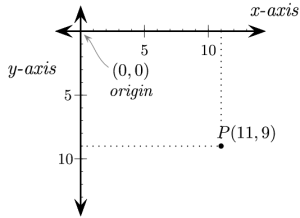Sketch tips
Every p5.js sketch has a setup() and draw() loop. Setup runs once. Draw runs consistently and just keeps looping. If you don't want to have a looping drawing, just leave your draw() loop empty and put all your code in setup()
In general, once you have that structure, you can kind of do whatever you want. The key things to remember in general are:
-
In general, don't worry if your code is sloppy or not perfect! It is ok. You really don't need to be a production ready software developer to do creative coding -- that is why we have tools.
-
Give credit where credit is due. Often my sketches start as a rift from a few lines of something I see so I usually put on the top of the code file "rift from [source]". This also shows that no one does anything really in a vacuuum or alone!
-
p5.js is a Javascript library but has a lot of built in functions so always check their reference!
-
p5.js uses a Cartesian, computer graphics coordinate system. By default the UPPER LEFT is 0, 0. x increases to the right, y increases as you go down. This is common across all of computer graphics and there are a lot of math reasons we do this, read more here.

-
RGB is the default color space, but you can mess around with it with lots of color functions.
-
Remember that p5.js has default alignments for primative shapes like rectangles. Check these if they are throwing off your sketches.
-
In general, you are probably going to want either a polar coordinate system or rectangular/Cartesian system for sketches. So think about this in your design. Here's an example converting between.
-
Object oriented programming can be super powerful in p5.js and create beautiful things and particle systems and force fields. Example 8 has an example of a Particle object if you haven't written objects in JS before.
-
While p5.js does support 3D, in general, OpenGL/WebGL implementations are going to just give you more. p5.js has a 3D mode on top of these, but it's just something to keep in mind. I primarily don't do a lot of 3D things so I have very few tips for this.
Some of my favorite...functions/hacks
background(255, 50) this makes a semi transparent background that gives your code a "ghost" appearance. 255 would be a white background like Example 1.
-
p5.js has a built in
noise() function so you don't have to write matrices to get noise! Reference here.
-
I love creating movement with sinusodial functions and also creating weird shapes with
tau (2*pi). Example 5 shows an example of tau being used to create weird, noisy curves. Example 4 shows some cool sin/cos curves.
map(value, start1, stop1, start2, stop2) is a function that allows you to linearly interpolate between value ranges. Used for color + coordinates. lerpColor(startColor, endColor, percent) lets you do this a bit easier for colors.
createVector() a lot of my sketches are vector based and what's great about creating a vector is you can do vector math like adding forces and velocities. Reference here.
curveVertex() allows you to build more complex geometries overall. Refence here. Example 4 also has an example of this.
blendMode() is a super easy way to start playing with color and pixel blending without writing any code. Reference for all the modes is here . I personally love using EXCLUSION to get a glitchy look.







